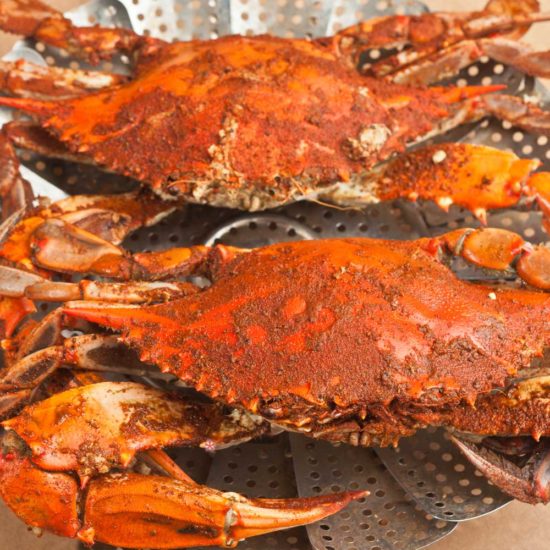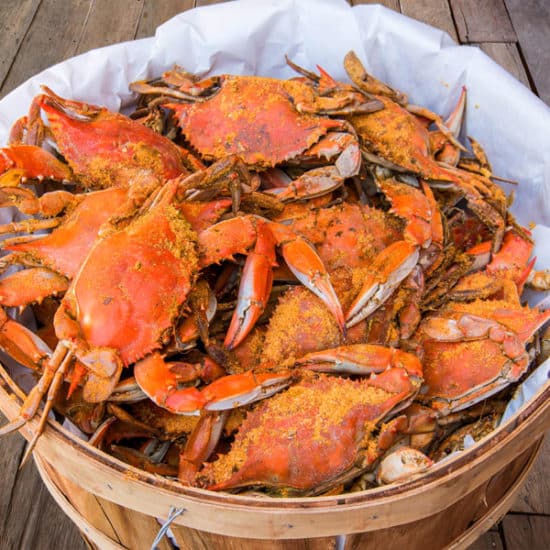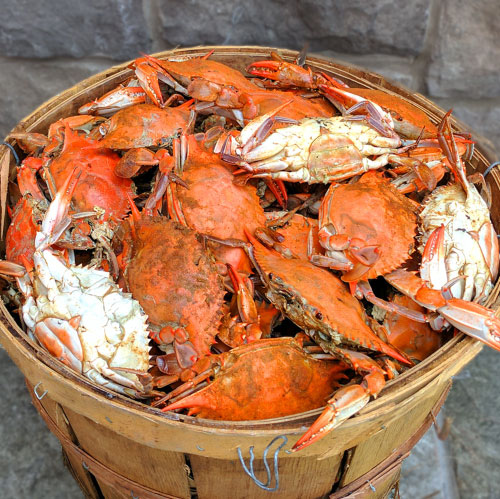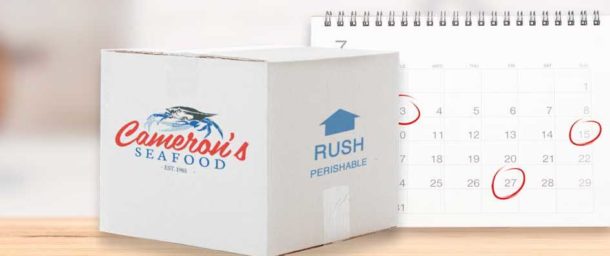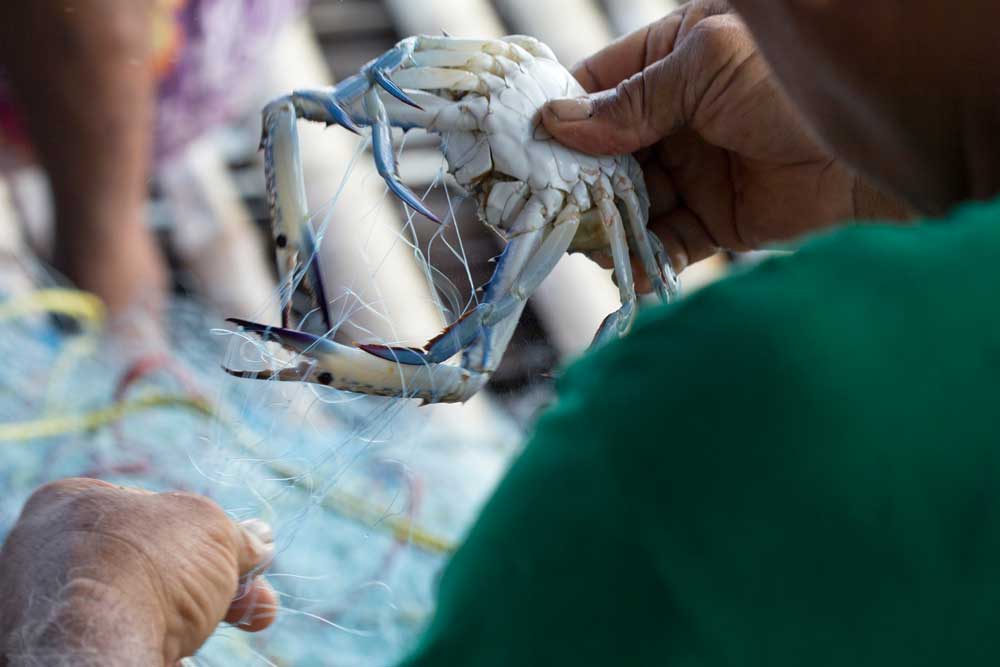
The Difference Between Farmed and Wild Caught Seafood
![]()
There has been a bit of a debate these past few years in the fishing industry… Which is better? Farmed Raised Seafood or Wild Caught Seafood.
Other questions spin from this debate too…Are either safe (for the environment and to eat)? Does either method affect the taste?
Keeping track of the ethics, safety and quality of either can get very confusing for the seafood consumer. Here we’ll breakdown the farm raised vs wild caught debate, answer some of these controversial questions and provide resources so you can make the safest and tastiest seafood decisions.
What is Wild Caught Seafood?
Wild Caught simply means that the fish, crustaceans and mollusks were fished from their natural habitat; lakes, rivers, bays, oceans, etc… And caught using the designated tools best for catching the specific species; nets, lines, pots, etc…
What is Farmed Seafood?
Farmed Seafood is a controlled area built to spawn and raise specific seafood species. Everything from oysters to shrimp and salmon to trout can be and is farmed. Tanks can be constructed on land or netted pens can be assembled in the species’ natural habitat; lakes, rivers, streams, oceans, etc…
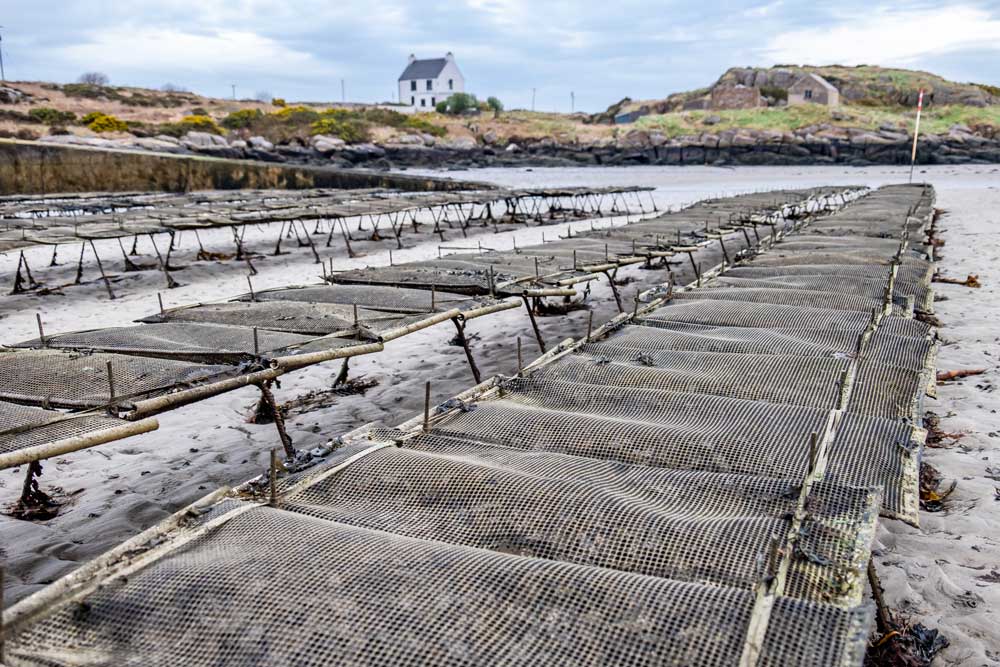
Pros and Cons
Wild Caught Seafood Pros: Seafood allowed to thrive in their own habitat are on the whole, healthier critters. Able to eat their natural diet, swim and spawn freely. It’s these activities that contribute to their flavor and muscle mass~whether the fish is lean (think white fish like cod or tilapia) or naturally fatty (think tuna or salmon). The environment controls these factors and make them naturally flavorful.
Wild Caught Seafood Cons: Regulations on how and when seafood is caught varies from body of water and country of origin. Some, enforcing stricter laws and more safety precautions than others. It’s these variance that can cause problems. Fishing for endangered species, fishing for species outside of their season or over fishing can cause some serious harm to the ecosystem.
Even when all the rules and regulations are followed there is still the risk of by-catch. By-catch is the unwanted fish or marine creatures that are caught during commercial fishing. If you remember the dolphin safe tuna campaigns of the 70’s and 80’s, this is one of the risks that by-catch imposes. Using the tuna industry as an example, nets meant to catch tuna were also catching dolphins. Both species are drawn to the same prey and ‘run’ in similar seasons causing dolphins to get caught right along with the tuna, killing most that were caught. The same concerns plague other marine critters and off-season seafood.
Farmed Seafood Pros: Farmed seafood makes up a large percentage of our store bought options. In a controlled environment these critters grow and spawn consistently, giving consumers a more consistent product.
Farmed seafood also does not run the risk of by-catch, over fishing or fishing out of season. Allowing the wild species time to recover their losses from the wild caught season while still maintaining consumer demand.
Farmed Seafood Cons: In some instances, cramped tanks make for unhealthier fish. If the water is not well circulated and clean the fish can get sick. If this happens in farmed seafood stored in netted pens in the open ocean, these illnesses can infect the natural species. All resulting in grave losses.
Depending on the feed used, the flavor of farmed seafood may be lessened or altered. That age old adage of ‘you are what you eat’ works for the farmed seafood industry as well.
All about the Monterey Bay
The Monterey Bay Seafood Watch is an outstanding organization meant to help enforce the safest fishing practices and give consumers a guide to which seafood is the safest. And ‘safest’ for the MBSW means a few things…1) That the seafood was farmed or caught sustainably with little to no effect on the species or the environment. 2) The the species itself is healthy and thriving. 3) The practices used in catching or farming the species is the healthiest for the environment and the consumer.
Many and most seafood retailers follow the MBSW’s guides when determining their inventories. Also, everyday, more and more commercial fishing industries and individuals are adopting safer practices and following the Monterey Bay guidelines.
So, which is better? Farmed or Wild?
The answer? There are great options in both categories! If you use the MBSW as your guide. Link here. There you can search out your seafood of interest and see what and where ranks the best. Most retailers, restaurants and grocers are proud of their sustainable seafood support and post information about their goods.
Cameron’s Seafood: Safe, Sustainable and Delicious
When it comes to seafood…Quality and Freshness Matters.
All seafood is not created equal. At Cameron’s Seafood, we pay special attention to every step of the process − from sourcing to manufacturing to packaging. We make sure to select only the freshest, highest quality products while also considering the long-term vitality of the harvested species as well as the well-being of the Bay and the families of crabbers it supports. We follow the highest guidelines from the MBSW to make sure only the very best is going to our customers.
For more information on our sustainability efforts and our True Blue Certification click here.

About the author
Patterson Watkins is a professional chef with over 17 years of experience. With a robust career in restaurants, contract dining and catering (including 4 Summer Olympic posts preparing food for the athletes!) Patterson joined the Cameron’s Seafood team at the end of 2018 to concoct some delicious recipes with our premium seafood items as the centerpiece.

